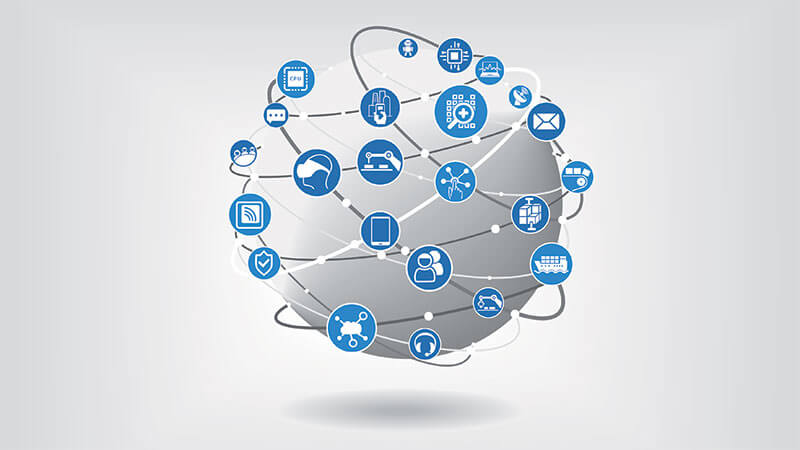Customers are altering their purchasing habits and turning to novel and innovative technology. Customers’ expectations of how to deal with your small business have changed. As a result, thus your company needs to alter its customer interactions. Virtual personal assistants (VPAs) are becoming more and more popular among consumers, and Gartner forecasts that these technologies will increasingly handle customer support contacts instead of actual customers.
Indeed, according to Gartner, 37% of customers would attempt to utilize a digital assistant to communicate with customer support on their behalf by 2025. Customer service will change as a result of the advent of the “machine customer”.
Machine customers are nonhuman economic actors in the exchange of payment for products and services on behalf of their human counterparts. Machine customers, as used in customer service specifically, are tools and bots that may communicate with customer care on behalf of actual customers.
While bots, virtual personal assistants, and other smart devices greatly simplify the lives of their human users, these machine clients can complicate your company’s present customer support system.
Table of Contents
IoT: What is it?

The network of physical items with inbuilt technology to communicate, detect, or react to their internal states or the surrounding environment is known as the internet of things (IoT). IoT refers to an ecosystem of connected devices, not just one technology. You may already have IoT technology in your home or place of business, including smart home thermostats, smart refrigerators, smart watches, fitness trackers, smart door locks, and smart security systems. Your company’s services and products might already be IoT-enabled and a part of this device-connected network. If so, think about how this IoT might benefit machine customers and customer service.
Is your current customer service technology—such as chatbots and forms—compatible with clients who use machines? How are machine customers’ experiences different from those of human customers? What do you suppose the most typical causes for machine customers to contact customer support could be?
You can prepare for the growth of machine consumers by asking yourself these questions and by considering how IoT technology can benefit your company. IoT’s potential to enhance customer service. The advantages of IoT can be utilized in customer service to adapt to changing consumer expectations and the rise of the machine customer.
Utilize IoT Data to Enhance Business Offerings
IoT devices can give your company useful insights into the behavior of its customers through the data they gather. The favorite items and services, the ones with the lowest customer approval, and the times when customers buy goods and services most frequently can all be tracked using these devices. The business’s offers can then be improved, and marketing plans can be revised to improve the consumer experience.
For instance, merchants can enhance stock management by leveraging IoT information to predict when they will need to refill. IoT isn’t just one technology; these can be utilized in conjunction with one another. A retailer could use IoT to manage inventory and enhance certain products, enhancing consumer satisfaction even further.
You may also enhance the consumer experience by providing a more tailored experience using the data acquired by IoT devices. Based on consumer behavior and data gathered through IoT, you can assist customer service representatives in troubleshooting problems or assist the sales team in knowing when and how to promote new services.
Minimize the IoT’s security risks
IoT has many advantages for enhancing your customer service approach, but it also carries hazards you should consider before investing. IoT technology’s interconnectedness makes them susceptible to security assaults. Between 2015 and 2018, about 20% of firms discovered an IoT-based attack, and these vulnerabilities will persist until the 2020s.
You can reduce these risks by putting a solid cybersecurity plan in place from the selection stage. Consider the IoT devices’ cybersecurity track record when doing your investigation. You will be allowing third parties access to your company once you invest in their technology, possibly exposing your data. Make sure they have their own security measures in place and security certificates.
Provide anticipatory customer assistance for a simple interaction
When something goes wrong, an IoT-enabled product can alert customer support, giving users a forewarning and a low-effort experience.
For instance, a smart refrigerator may be made to schedule maintenance, identify hazardous germs in ice, warn users when food is about to expire, reorder food that has run out, and show when filters need to be changed.
Customers benefit from this kind of low-effort experience that predictive services provide. Greater client loyalty results from improving the customer experience.
How software can be useful
By making it simpler to respond to demands from machine consumers, IoT technology can assist you in meeting the evolving expectations of human customers. You may provide predictive customer care and gather data to enhance the efficiency of your customer service team by utilizing IoT in customer service. Software is useful.
You may examine past data, make predictions about the future, and offer predictive maintenance services with the use of IoT analytics software. In order to reduce security concerns, network security software can also assist you in improving cybersecurity for IoT devices.
Conclusion
Customer support is a crucial component of any organization. It supports and strengthens a company’s daily operations as a cornerstone. You could misunderstand the term “customer service” when referring to customer care, toll-free lines, etc. Connect with SaaSworthy to learn more about the benefits of IoT.
Read More
A Comprehensive Guide to Low-Code Development (LCDP) Software for 2022
What are the Top 10 Ways To Build Credibility As A New SaaS Startup in 2022?






